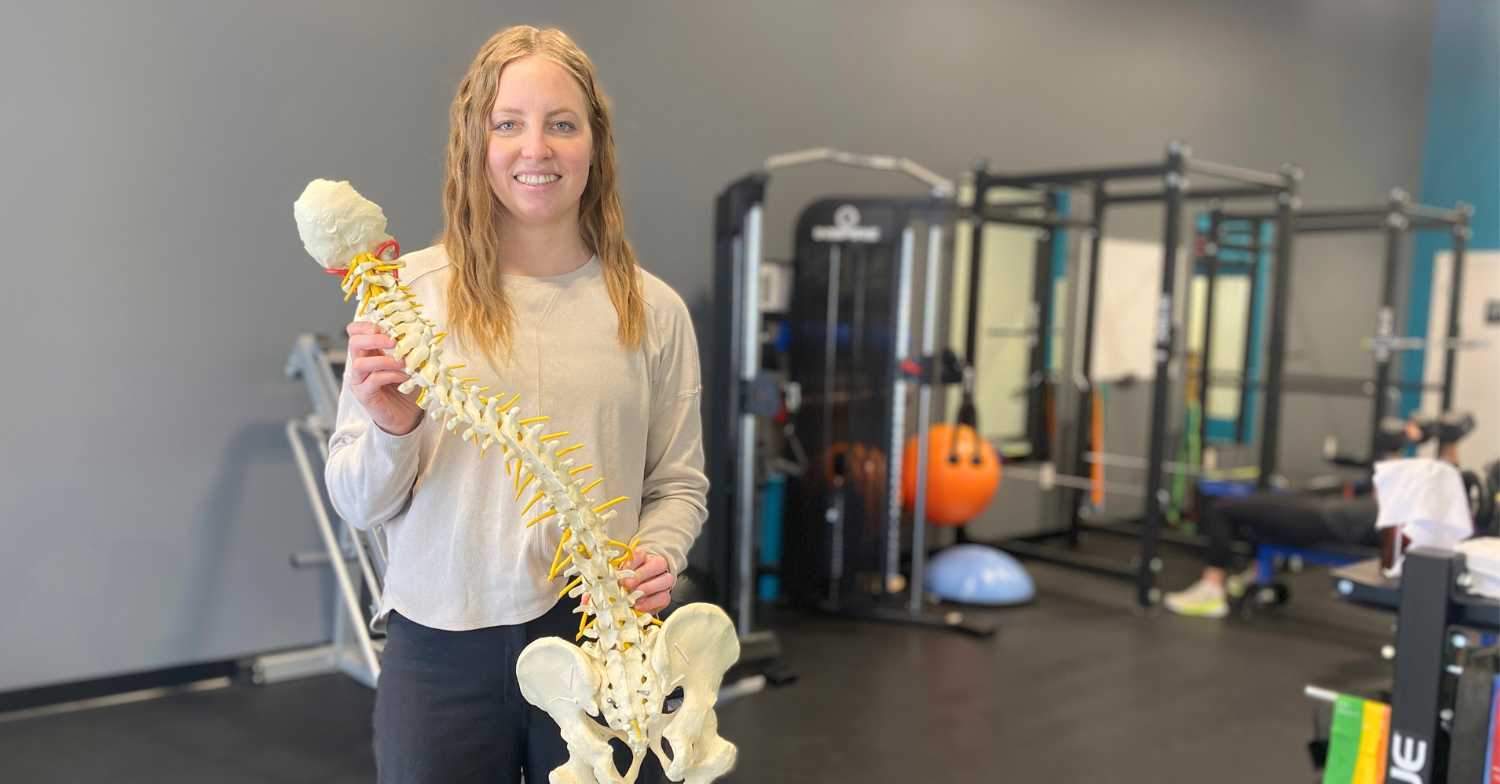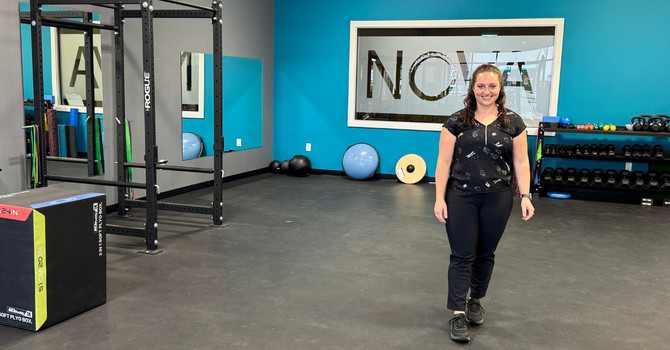
What is Scoliosis?
If you have scoliosis you may have symptoms such as pain, difficulty breathing, reduced mobility or strength on one side, osteoarthritis, decreased self-esteem, depression, anxiety or feel restricted during daily or sporting activities. Scoliosis is a complex, three-dimensional problem.
The spine's normal curves occur at the cervical, thoracic and lumbar regions. These natural curves position the head over the pelvis and work as shock absorbers to distribute mechanical stress during movement.
Scoliosis is an abnormal curvature of the spine, the spine deviates side-to-side from centre. A scoliotic spine also twists within the curves, this rotational component often makes one’s hips, rib cage or shoulders stick out more on one side or the other. The curve is often described as having a concave side and a convex side.
Did you know that females are 10 times more likely to develop scoliosis than males? When a girl receives a diagnosis of scoliosis, the chance of her curve worsening is up to eight times more likely than in a boy of similar age.
How to Identify Scoliosis
Scoliosis is most often diagnosed in childhood or early adolescence but can develop at any time across throughout the lifetime. It is typically identified through a visual or manual assessment of the spine. You may notice asymmetries in your own body such as uneven posture at the shoulders, waist, or hips and one side of the back or shoulders protruding more than the other. Pain with scoliosis tends to be concentrated on one side of the body.
There are many different types of scoliosis and it is important that you receive treatment specific to your case. In the majority of cases, scoliosis is identified in adolescence and the cause is unknown. This is referred to as idiopathic scoliosis. If scoliosis develops later in life due to degeneration of the spine, it is referred to as degenerative scoliosis. There is also congenital scoliosis and neuromuscular scoliosis.
There are also different types of curvatures such as an ‘S’ curve or a ‘C’ curve. These curvatures can occur at different areas of the spine. The severity of scoliosis depends on the degree of the curvature which is most accurately measured using spinal x-rays. Given the wide range of variability in how scoliosis may be present for you, it’s important that you work with a healthcare team (physiotherapist, physician, and possibly an orthopeadic surgeon) to receive the best care and treatment.
Why Work With a Physiotherapist?
Many people don’t know that a comprehensive physical therapy program can provide many benefits for people living with scoliosis. At any age, you can make improvements with your scoliosis. Scoliosis specific exercise retrains your muscles to pull your curve into a more optimal alignment.
If you’re afraid to exercise because you’re not sure if it’s safe with scoliosis, you’re not alone. I often hear from potential clients who are worried that working out will progress their curve or lead to an injury. Exercise offers countless physical and mental health benefits for everyone, including scoliosis patients. With the proper exercises you can improve pain levels, self-esteem, strength and reduce your curve progression. Exercise can also reduce the need for surgery. But it’s not always easy to figure out which exercises are the most beneficial for you if you have scoliosis.
It’s very important to avoid movements that feed your curve (exaggerate your concavities and convexities). As a physiotherapist, I can help you understand your curve and the unique ways it affects your body. Once you know that, we can determine which exercises are right for you and which aren’t.
In fact, exercising and building strength are some of the best things you can do to improve your health and support your spine.
The most effective way to manage scoliosis symptoms such as pain, tension or restricted movement is by following a treatment plan focused on stretching, strengthening and balance.
What to Expect From Treatment
As a physical therapist with experience working with patients who have scoliosis I can develop a treatment plan tailored to you. Plans are focused on three main goals:
1. Elongation
The goal is to learn how to lift your body and elongate your spine so it’s not in a compressed position all the time. Elongation exercises are designed to decompress your spine and the muscles running along the sides of your trunk: lats, pecs, and core muscles. Elongating those areas prepares your body to strengthen the muscles there effectively. With a series of specific exercises for your body, these exercises can reduce pain and improve posture.
2. Breathing
Scoliosis curves make it difficult to breathe naturally in the most efficient way. Most scoliosis patients tend to be chest-breathers. They use some of the extremely small chest and neck muscles to breathe, which often causes neck pain. Training yourself to be aware of your core and lengthen your breath in and out takes work!
When the muscles of your core aren’t balanced, there are a few muscles that do the majority of the work and end up feeding into your curve. That’s why understanding how each aspect of your core works during breathing will allow you to stabilize the spine better and maintain elongated positions.
Breathing exercises focus first on switching from chest to diaphragmatic breathing. The next goal is to learn global breathing, which helps to lengthen and strengthen the diaphragm, lungs, and all the muscles between the ribs. Breathing this way also helps strengthen the core and pelvic floor muscles. Breathing in your new elongated position ensures that you get the maximum amount of benefit from something you do all day long.
3. Strengthening
Once you’ve learned to maintain an elongated position and improve your breathing, the next goal of scoliosis physiotherapy is strengthening your body within that elongated position.
Despite some myths you may have heard, exercising and building strength are some of the best things you can do to support your spine. A sedentary lifestyle is far more likely to cause your curve to progress than an active one.
It can be very helpful to work with a physical therapist that understands the unique challenges of scoliosis to design a program to help you strengthen your muscles in a balanced, aligned posture. The best exercise program is one that you can be consistent with. When speaking with your therapist, be honest about your personal preferences and the amount of time and energy you can commit consistently to an exercise program. Managing your scoliosis is a lifelong journey.
Starting Treatment
It’s never too late to start taking care of your body and managing your scoliosis!
All new client’s will be booked for an assessment which will include:
- A discussion about your concerns and a review of any important medical imaging
- A physical assessment
- Education regarding your scoliosis
Follow-ups will be one hour in length and focus on:
- Ongoing education to help you learn more about your curvature and how to manage it
- Exercises for elongation, breathing and and postural correction (you will be given specifics to take home with you)
- Manual therapies to reduce pain and improve mobility
The number of treatments required will depend on your individual goals, progress and commitment to the plan. If you want expert support and a customized treatment plan designed for your curve then contact our clinic at 306-382-3332 or check out our online booking system to book an assessment.


.jpg)

